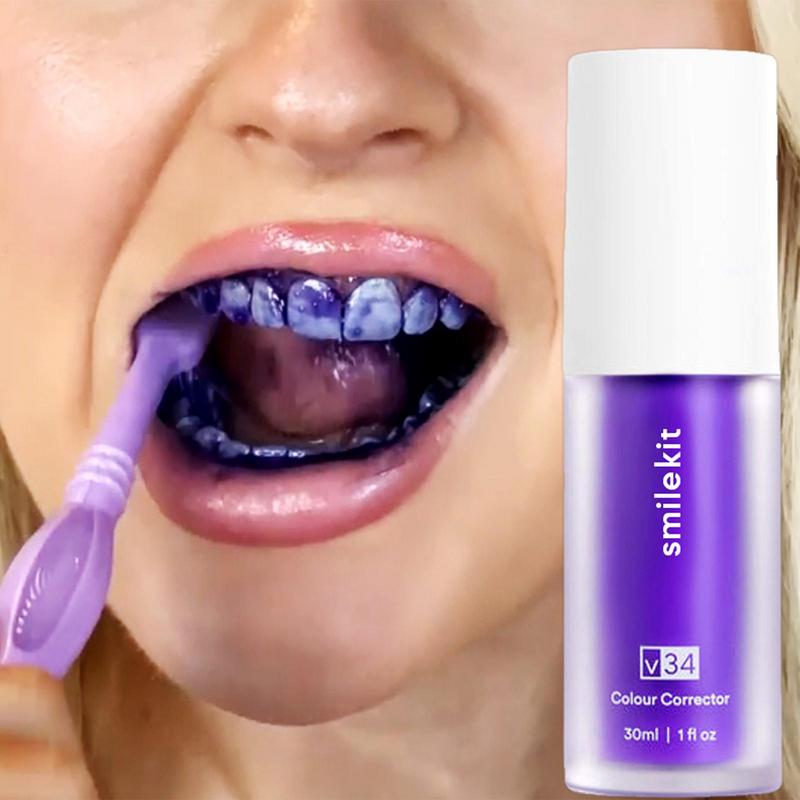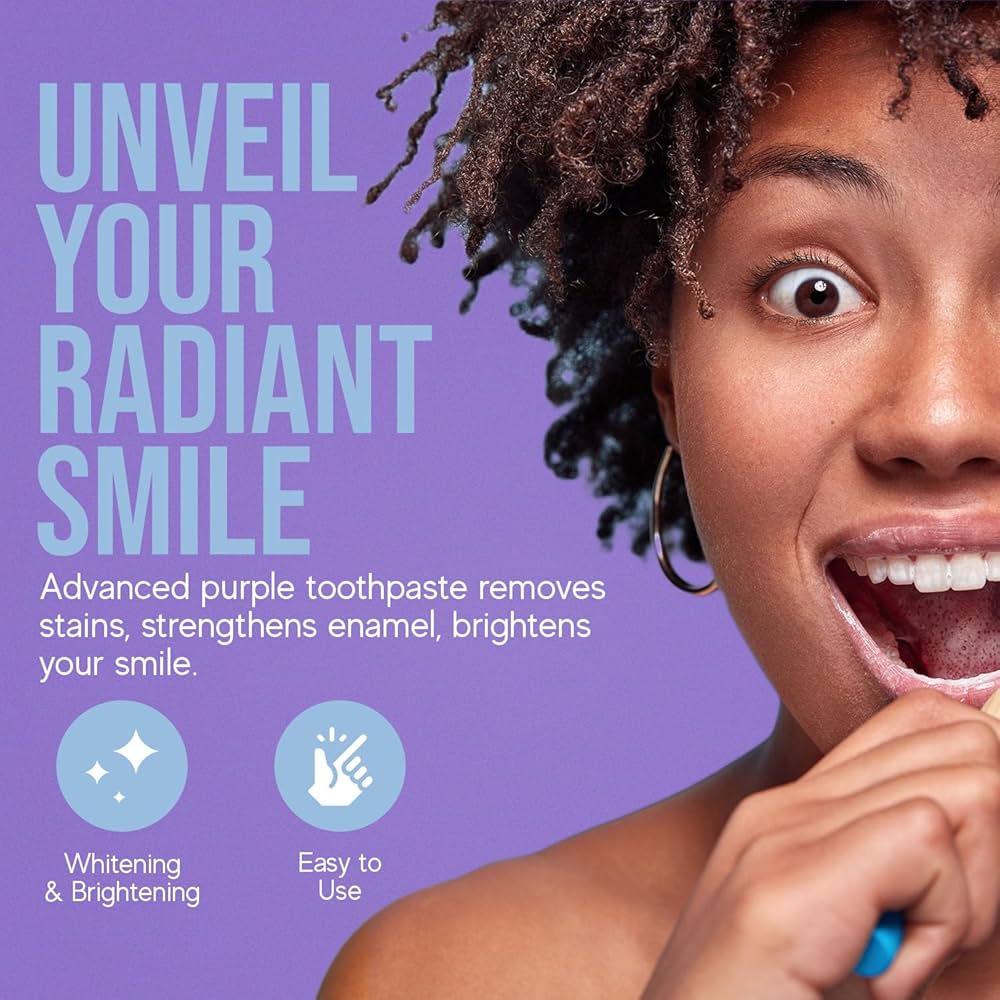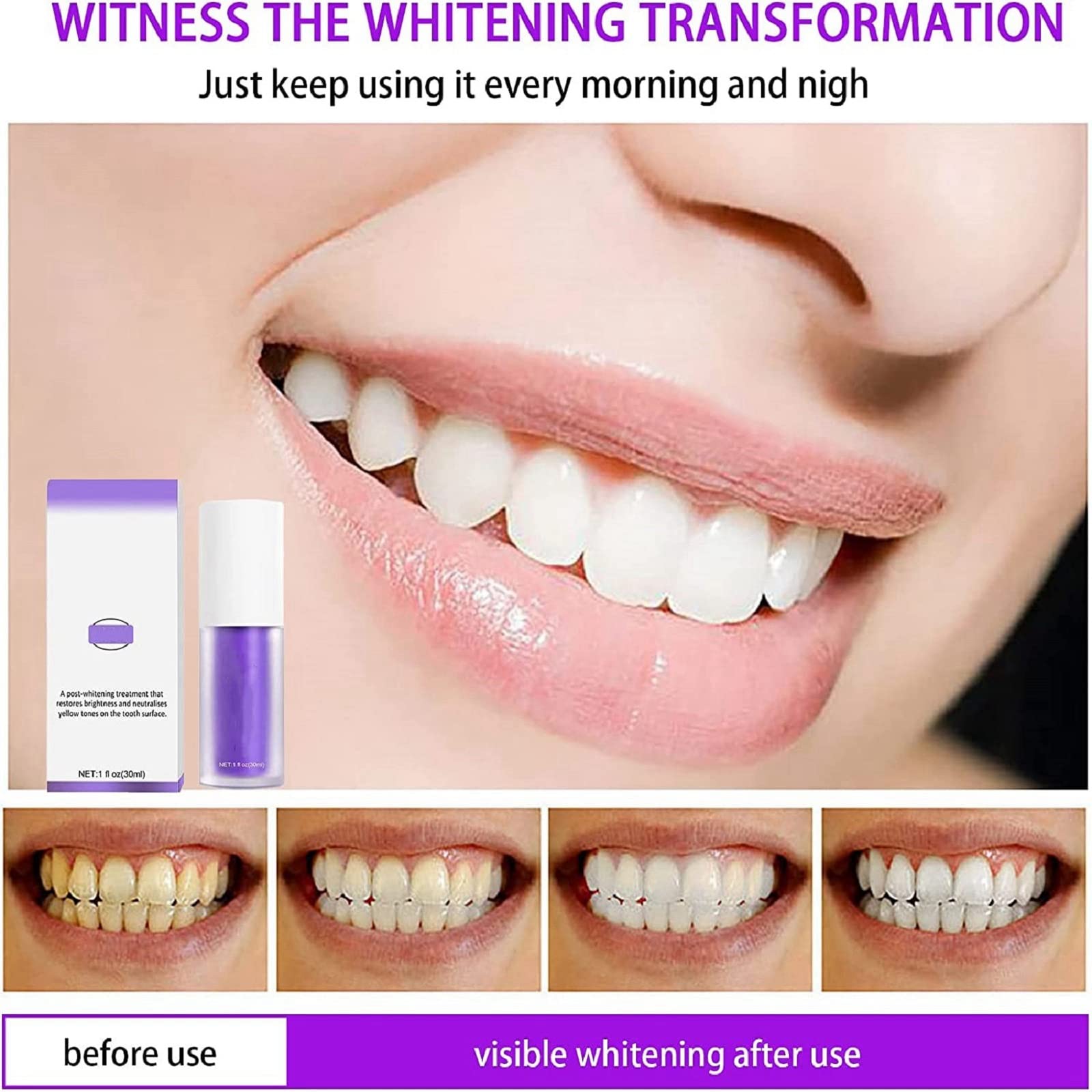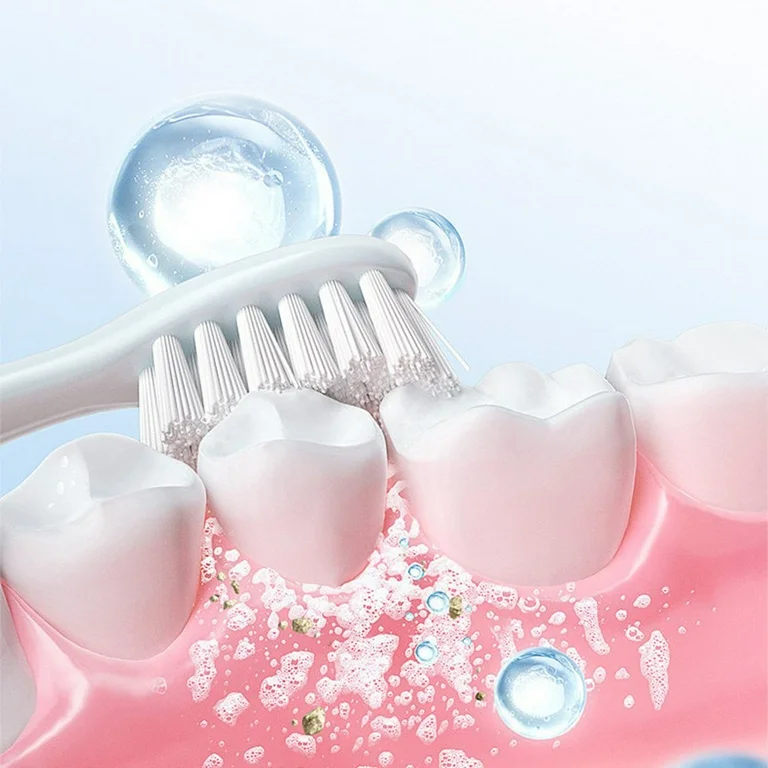
Debunking Myths: Purple Toothpaste Effectiveness
Introduction to Purple Toothpaste
Purple toothpaste is making waves on social media and among beauty enthusiasts. This product claims to whiten teeth using purple pigments. These pigments aim to cancel out yellow tones on teeth. It’s a smart use of color theory. Does purple toothpaste actually work?Purple lies opposite yellow on the color wheel.
However, it’s crucial to grasp what purple toothpaste is and isn’t. Despite buzz, it’s not a stain remover. Nor does it bleach teeth. It offers a quick visual trick, not a lasting fix. The whiteness you see post-brushing is fleeting. Understanding this helps curb unrealistic expectations.
In essence, purple toothpaste provides a temporary solution. For long-term whiteness, it’s not your best bet. It’s a fresh approach to oral care but with limitations. Later in this blog, we’ll compare it to traditional toothpaste. We will also explore safe usage and alternatives for deeper whitening.

How Purple Toothpaste Claims to Whiten Teeth
Purple toothpaste aims to provide a quick fix to brighten your smile. The key is color science at work. The purple pigments in the toothpaste are made to mask yellow stains on teeth. Here’s how it’s supposed to work:
When you brush with purple toothpaste, the purple color mixes with the yellow on your teeth. Because purple and yellow are opposites on the color wheel, they cancel each other out. This creates an illusion of whiteness. It’s like applying a filter; the effect is immediate but doesn’t last long.
The purple toothpaste’s claim rests on color correction, not actual teeth bleaching. The product doesn’t work by removing stains or altering teeth whiteness. Instead, it uses the purple tint to alter how light reflects off your teeth. That way, your teeth seem whiter after brushing, even if the change isn’t real inside.
People may see their teeth look less yellow briefly after use. This effect can boost confidence for a short while. But remember, the whitening is not permanent. It fades quickly, often within a few hours.
In sum, purple toothpaste promises a superficial solution to a deeper problem. It does not address the root of tooth discoloration. For those wanting longer-lasting results, exploring other options is wise.
Key Ingredients of Purple Toothpaste
Unlike traditional toothpastes, the distinctiveness of purple toothpaste lies in its innovative ingredients. Let’s delve into some key components and their functions in purple toothpaste that aims to visually whiten teeth:
- V34 Color Corrector Serum: This is the cornerstone of purple toothpaste, which includes specific dyes designed to counteract yellow stains on teeth.
- Glycerin: Glycerin ensures the toothpaste retains its moisture, contributing to its smooth texture.
- Sorbitol: Serving dual purposes, sorbitol maintains toothpaste consistency while acting as a sweetener.
- Hydrated Silica: As a mild abrasive, it helps remove plaque without excess enamel erosion.
- Xylitol: This ingredient plays a role in sweetening the toothpaste while having potential oral health benefits like reducing the risk of decay.
- Cellulose Gum: It thickens the toothpaste, creating optimal consistency for brushing.
- Peppermint Oil: Beyond adding a refreshing flavor, it may also have antimicrobial benefits.
- Tetrasodium Pyrophosphate: Often included to combat tartar buildup on teeth.
While these ingredients give purple toothpaste its distinctive qualities, does purple toothpaste actually work for whitening? Users should be aware that while purple toothpaste contains compounds that might address the look of teeth temporarily, they arguably lack certain elements that contribute to overall dental health, such as fluoride, found in many traditional toothpastes.
Furthermore, the reliance on visual effects over dental health substances places purple toothpaste in a separate category from conventional whitening toothpastes. Those in search of not just a temporary fix but also long-term oral health benefits might consider sticking to or supplementing with traditional products recommended by dental professionals.

Comparing Effectiveness: Purple Toothpaste Versus Traditional Toothaste
When discussing oral hygiene, effectiveness matters. Comparing traditional and purple toothpaste is key. Both have pros and cons.
Traditional toothpaste often includes stannous fluoride or sodium fluoride. These ingredients fight cavities and strengthen teeth. They also remove plaque and may prevent tooth decay. Hydrated silica in these pastes acts as an abrasive. It helps scrub away stains safely. Most have the American Dental Association (ADA) seal. This means they meet set standards for safety and effectiveness.
Purple toothpaste, on the other hand, is different. It doesn’t have standard whitening agents like peroxides. Instead, it relies on color theory. Purple pigments aim to negate yellow stains. This visual trick makes teeth appear whiter short-term.
However, purple toothpaste lacks ADA approval. It also doesn’t offer long-term benefits. It provides a quick fix, not a deeper clean or lasting whitening. Moreover, it does not typically remove actual stains or protect against tooth decay.
In essence, while purple toothpaste may give a quick cosmetic boost, it’s not a substitute for traditional pastes. It’s good for temporary brightening. But for health and lasting whiteness, traditional toothpaste is better.
Professional Alternatives to Purple Toothpaste for Whitening
While purple toothpaste may offer a quick cosmetic fix, it falls short for long-term whitening. Let’s explore professional alternatives that deliver more permanent results.
In-Office Whitening Treatments
Dentists offer professional in-office whitening treatments. These use potent bleaching agents like hydrogen peroxide. The treatment can lighten teeth several shades in one visit. Dentists tailor these treatments to your specific needs, ensuring safety and effectiveness.
Take-Home Whitening Kits from Dentists
Some dentists provide take-home whitening kits. These kits come with custom-fitted trays and a whitening gel. They usually contain a lower concentration of bleaching agents. You use them over several weeks for a gradual, yet more lasting whitening effect.
Over-the-Counter (OTC) Whitening Products
There are OTC options, such as whitening strips and trays. They can offer good results but may vary widely in effectiveness. It’s best to consult a dentist before trying these products for safe use and to set realistic expectations.
Whitening Toothpastes with ADA Approval
Whitening toothpastes endorsed by the American Dental Association (ADA) contain mild abrasives. These help remove surface stains. They also have chemicals or polishing agents that provide additional stain removal.
Bonding and Veneers
For a different approach, dental bonding and veneers are options. They cover discoloration and can improve the appearance of teeth. While more expensive, they are also more permanent solutions.
These professional options, though sometimes costlier, tend to be more effective and safer. They provide lasting results compared to the temporary effects of purple toothpaste. Be sure to discuss these alternatives with your dentist to find the best fit for your smile.

Evaluating the Safety of Purple Toothpaste
Safety is a top concern when trying new dental products, and purple toothpaste is no exception.Does purple toothpaste actually work? While the product is not currently approved by the American Dental Association (ADA), understanding its safety profile is essential for informed use.
Ingredients Check
Review the ingredient list carefully. Look for any known allergens or harsh substances. If you have a history of sensitive teeth or allergies, this step is crucial.
Possible Side Effects
Some users have reported side effects. These may include gum irritation or heightened teeth sensitivity. If you experience such issues, consider discontinuing use and consult a dentist.
Long-Term Effects
Data on long-term usage of purple toothpaste is sparse. It remains uncertain how daily use could impact dental health over time. It’s wise to rotate use with ADA-approved toothpaste for peace of mind.
User Reviews and Reports
Check online reviews from other users. While not scientific evidence, they can give insight into common experiences with the product.
Consultation with Dental Professionals
Before committing to use, it’s best to talk with a dentist. They can provide personalized advice based on your oral health history. They can also suggest safer whitening alternatives.
In summary, while the product may be an innovative approach to teeth brightening, it is important to weigh the safety considerations. Stick to products that have a proven safety track record for daily dental care. Use purple toothpaste sparingly and under professional guidance.
Best Practices for Utilizing Purple Toothpaste
Follow Manufacturer Instructions
Always read and follow the product’s directions. This usually involves applying a specific amount to your toothbrush and brushing for a suggested duration.
Integrate with Regular Oral Care
Incorporate purple toothpaste into your routine carefully. It should not replace your regular toothpaste. Use it alongside fluoride-based toothpaste for overall dental health.
Monitor Oral Health Changes
Does purple toothpaste actually work?Keep an eye on your teeth and gums for any adverse reactions. If you notice increased sensitivity or irritation, stop using the product and consult your dentist.
Understand Limitations
Remember that the whitening effect is temporary. The product doesn’t provide long-term solutions to dental issues such as plaque or discoloration.
Consider Alternatives for Long-Term Effects
For lasting whiteness, consider professional treatments or ADA-approved whitening products. Consult with a dentist to find the best option for your needs.
By following these guidelines, you can safely explore the benefits of purple toothpaste while maintaining your oral health.
The Truth About Temporary Whitening Effects
It’s key to understand the truth behind purple toothpaste’s claims. This product uses color-correcting principles with purple pigments. These pigments neutralize yellow stains, creating a visual effect of whiter teeth. But it’s vital to grasp that this effect is not permanent.
The change you see is just an illusion. After brushing, teeth may look less yellow, yet this is temporary. Soon after, the purple pigment washes away, and so does the whiteness. In reality, purple toothpaste does not bleach or remove stains deep within the teeth.
Many users enjoy the brief boost in tooth brightness. However, this shouldn’t replace regular toothpastes that protect and clean teeth. For those seeking a lasting solution, purple toothpaste falls short. Other methods should be considered for more permanent results.
To sum up, purple toothpaste offers a quick but short-lived effect. It’s not a fix for long-term dental health or discoloration concerns. It’s more of a band-aid than a cure. Keep this in mind when you look for ways to brighten your smile.

Addressing Common Questions and Misconceptions
When considering purple toothpaste, questions and misconceptions often arise. Does purple toothpaste actually work?Let’s address some common ones.
Does Purple Toothpaste Actually Work for Long-Term Whitening?
Purple toothpaste does not produce long-term whitening. It uses color-correcting pigments for a short-term effect. Over time, the initial brightening fades away.
Is Purple Toothpaste a Substitute for Regular Toothpaste?
No, purple toothpaste should not replace your usual toothpaste. It lacks essential ingredients like fluoride. These protect against tooth decay and maintain oral health.
Can Purple Toothpaste Harm Your Teeth?
While not inherently harmful, purple toothpaste could cause side effects, like gum irritation. It doesn’t have the ADA’s approval for effectiveness or safety.
Are There ADA-Approved Alternatives for Teeth Whitening?
Yes, ADA-approved whitening toothpastes and treatments are available. They offer a safer and more reliable approach to whitening your teeth.
If Purple Toothpaste is Not Effective, Why Is It Popular?
Social media and visual results contribute to its popularity. It provides an immediate but temporary brightening that appeals to users.
Can Purple Toothpaste Replace Professional Whitening?
Professional whitening is safer, more reliable, and offers long-lasting results. Purple toothpaste cannot match professional treatment effectiveness.
In summary, purple toothpaste offers a quick fix but is not a long-term solution. It should be used cautiously as part of an overall dental care routine.
Conclusion: The Reality of Purple Toothpaste
In conclusion, purple toothpaste presents an intriguing quick fix. It targets tooth yellowing using color theory. However, it’s vital to recognize its limits. It does not truly whiten teeth. Its effects are brief and do not tackle deeper tooth issues.
Does purple toothpaste actually work for long-lasting whitening? Not quite. Its benefits are temporary and work best as a short-term solution for minor discoloration. The pigment in the toothpaste offers an instant visual brightening. But the actual color of teeth remains unchanged. Over time, the effect fades, and natural tooth color reappears.
For those looking for enduring results, traditional toothpaste is more reliable. It contains fluoride and other ingredients that can improve oral health. For a professional whitening alternative, consult with a dentist. They can suggest treatments that offer longer-lasting change.
Remember, the allure of immediate results should not overshadow the need for safe, effective oral care. Purple toothpaste might be popular due to its instant results and social media buzz. But it should not replace your regular toothpaste. Always consider products with the ADA seal for trusted dental care.
In essence, while purple toothpaste can provide a quick visual fix, it doesn’t replace professional care. Nor does it offer the oral health benefits of traditional toothpaste. Use it for a temporary boost but maintain a regular, health-focused dental routine for lasting oral hygiene.

